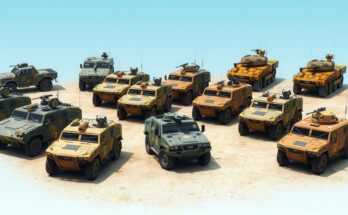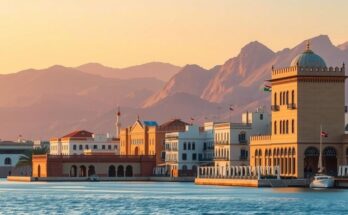The article discusses Syria’s tumultuous security landscape under transitional authorities facing ethnic and religious conflicts, particularly involving the Alawite, Kurdish, and Druze communities. Interim President Ahmed Al-Sharaa’s government struggles with rising violence, disarmament negotiations, and external pressures from Israel, all while aiming to unify a fractured nation. Despite efforts to establish a cooperative framework, persistent instability and historical tensions persist, creating a challenging environment for governance.
The situation in Syria remains precarious as transitional authorities struggle to maintain security amid ethnic and religious tensions. Heavy clashes have erupted, particularly along the Alawite-dominated coast, spotlighting the ongoing challenges faced by security forces primarily comprised of former Islamist rebels. Despite the new government’s efforts, the threat of violence continues, with the Syrian Observatory for Human Rights reporting over 500 fatalities, including civilians from the Alawite community.
With fears of potential reprisals against Alawites due to the Assad regime’s brutal past, challenges further mount for interim President Ahmed Al-Sharaa, whose government appears ill-equipped to foster cooperation with the disaffected Alawite population. Analyst Aron Lund highlights that the new government possesses only repressive power and is primarily made up of jihadist factions, exacerbating instability in Alawite villages.
The north and northeast are predominantly controlled by a semi-autonomous Kurdish administration, complicating the national dialogue. Sharaa has called for the disarmament of all militia groups and rejected Kurdish autonomy, while negotiations have yet to yield tangible results. The Kurdish forces, bolstered by U.S. support, resist integration into a unified military under the new regime, particularly as they seek to preserve their governance frameworks.
The Druze minority, constituting three percent of the population, has remained largely unengaged in the civil conflict, focusing on local defense. However, they have expressed a willingness to participate in a national army while maintaining autonomy over security matters. Israel’s involvement has intensified, with defense officials cautioning the Syrian government against threatening Druze communities; Druze leaders have countered by reasserting their allegiance to a single Syria.
The interplay of local governance, ethnic diversity, and international influences continues to hinder Syria’s stability as the transitional authorities navigate an array of complex challenges in a fractured national landscape.
The ongoing conflict in Syria is characterized by deep-seated ethnic and religious tensions, particularly in the context of the Alawite, Kurdish, and Druze communities. The challenges facing interim President Ahmed Al-Sharaa’s government are multifaceted, involving repression amidst rising violence, stalled negotiations with Kurdish forces, and the precarious position of the Druze population. External pressures, especially from Israel, complicate the internal dynamics further, indicating that stability in Syria remains distant as leaders grapple with the demands of disparate factions.
Original Source: www.arabnews.com




